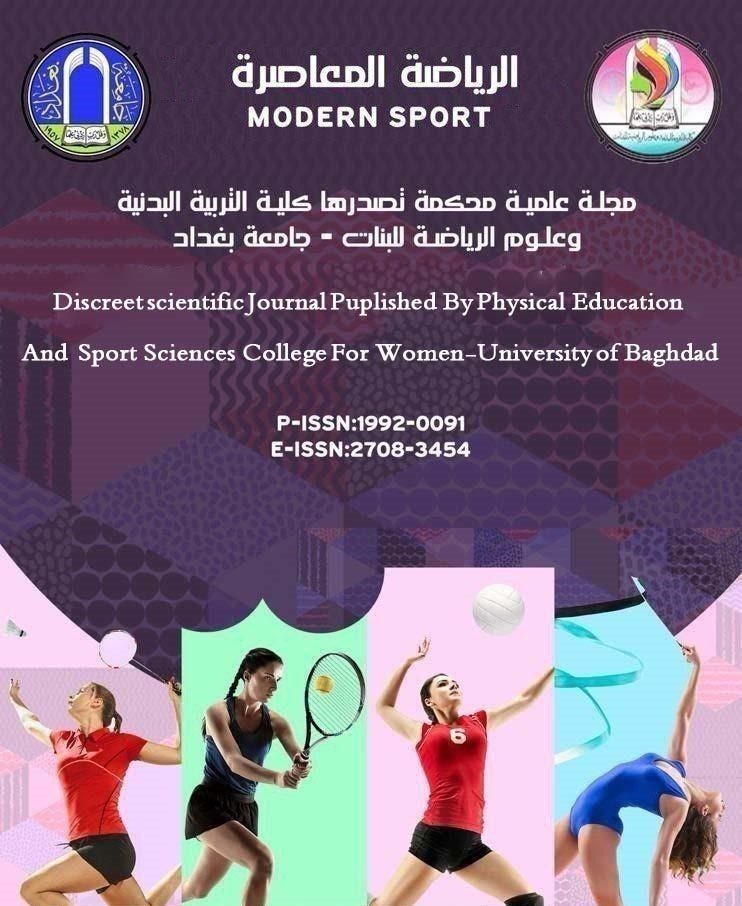Abstract
The research aims to identify the difference in some anthropometric indicators and the results of physical tests between accepted and non-accepted students. The research hypotheses were that there is no statistical significance for some anthropometric indicators and the results of physical tests between accepted and non-accepted students. The researcher used the descriptive approach using the comparison method. The results showed that the calculated values for the physical tests were 60-meter sprint (2.60), 540-meter run (2.51), broad jump (3.30), abdominal exercise (2.36), and front lean (1.94), which is greater than the tabular value (1.64). The values of the anthropometric indicators, body mass (0.52) and body type (0.06), are smaller than the table value (1.64) and are considered a random difference. As for the fat mass index (8.82), it is larger than the table value (1.64) and is considered a significant difference. The reasons for the strength and weakness of the differences that appeared were discussed through it. Among the most important conclusions are that the level of all physical tests for accepted students was better than that of non-accepted students, and that the level of the variable (fat mass) for non-accepted students was better than that of accepted students, and that the level of the variables (body mass index and body type) for accepted students was better than that of non-accepted students. The researcher recommended conducting similar studies between universities to compare accepted and non-accepted students at the level of males and females for various physical and bodily measurements.
Keywords
anthropometric indicators
Abstract
يهدف البحث إلى التعرف على الفرق لبعض المؤشرات الانثروبومترية ونتائج الاختبارات البدنية بين الطلاب المقبولين والغير مقبولين, وجاءت فروض البحث في عدم وجود دلالة إحصائية لبعض المؤشرات الانثروبومترية ونتائج الاختبارات البدنية بين الطلاب المقبولين والغير مقبولين, واستخدم الباحث المنهج الوصفي بأسلوب المقارنات, وقد أظهرت النتائج ان القيم المحسوبة للاختبارات البدنية عدو 60 متر(2.60) وركض 540 متر ( 2.51) والقفز العريض ( 3.30) وتمرين بطن ( 2.36) والاستناد أمامي ( 1.94) وهي أكبر من القيمة الجدولية (1.64). أما قيم المؤشرات الانثروبومترية كتلة الجسم (0.52) ونمط الجسم ( 0.06) وهي أصغر من الجدولية (1.64) ويعد فرق عشوائي وبالنسبة لمؤشر كتلة الدهن (8.82) وهي أكبر من الجدولية (1.64) ويعد الفرق معنوي ونوقش من خلالها أسباب قوة الفروق التي ظهرت وضعفها, ومن أهم الاستنتاجات إن مستوى جميع الاختبارات البدنية للطلاب المقبولين كان أفضل من الطلاب الغير مقبولين, وإن مستوى متغير (كتلة الدهن) للطلاب الغير مقبولين كان أفضل من الطلاب المقبولين, وإن مستوى متغيري (مؤشر كتلة الجسم ونمط الجسم) للطلاب المقبولين كان أفضل من الطلاب الغير المقبولين, وأوصى الباحث إجراء دراسات مشابهة بين الجامعات للمقارنة بين الطلبة المقبولين وغير المقبولين على مستوى الذكور والإناث لمختلف القياسات الجسمية والبدنية.
Keywords
المؤشرات الانثروبومترية
